
Designed by top-notch architecture practices, eight projects located across the globe — from Chicago to Mumbai to Copenhagen — recently received AIA 2020 Architecture Awards. The awards competition highlights some of the best contemporary architecture and serves as a reminder of the many ways buildings and spaces can improve lives.
The nine-member jury was drawn to submissions that demonstrated design achievement as well as a sense of place, history, and environmental sustainability.
Scroll down for a look at this year's winners. And in case you missed them, check out the winners for Regional & Urban Design and Interior Architecture.
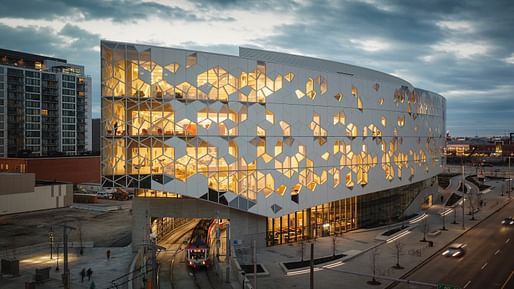
Calgary Central Library, Calgary, Alberta, Canada | Snøhetta and DIALOG
Project excerpt: “On a former brownfield infill site in rapidly expanding Calgary, this new library plays a vital role and can accommodate more than twice as many annual visitors as the facility it replaced. Fitting seamlessly into the complex urban condition surrounding it, the library boasts a generous 75,000 square feet of entry plaza and outdoor amphitheater that allows its lively programming to spill outside. The library is wrapped in a striking triple-glazed façade composed of a modular, hexagonal pattern that echoes the library’s efforts to welcome all visitors. [...] The whole building is encased in the same pattern, allowing every side to operate as the ‘front’ of the library, and the same visual vocabulary plays a significant role in the library’s new visual identity and wayfinding inside.”
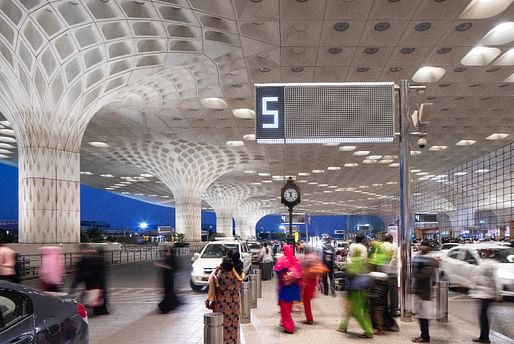
Chhatrapati Shivaji International Airport Terminal 2, Mumbai, India | Skidmore, Owings & Merrill
Project excerpt: “Accommodating Mumbai’s emergence as the financial capital of India and supporting its airport’s growing volume of domestic and international air traffic required a bold solution. Already daunting, this project was further complicated by the client’s challenge to triple the existing airport’s capacity on a highly constrained site ringed by informal villages and an overflowing river. The result is a new terminal that echoes the heritage of the country and the spirit of the city. The design team’s response for the new terminal is an x-shaped, four-level plan that seamlessly fits the site, avoids the villages and river, and maximizes frontage for aircraft parking. The terminal also provides aircraft contact gates that can handle 32 wide-body aircraft or 48 narrow-body aircraft for both international and domestic travel.”

Ed Kaplan Family Institute for Innovation and Tech Entrepreneurship, Chicago | John Ronan Architects
Project excerpt: “In the heart of Mies van Der Rohe’s historic Illinois Institute of Technology campus, the Family Institute for Innovation and Tech Entrepreneurship fosters collaboration and innovation among the school’s students, faculty, and alumni. Containing a wide array of collaboration spaces for the school’s project-based experiences, this open and light-filled building embodies its synergistic and interdisciplinary approach to educational initiatives. The design team envisioned the building as a hybrid of campus space and building and organized it around two open-air courtyards.”
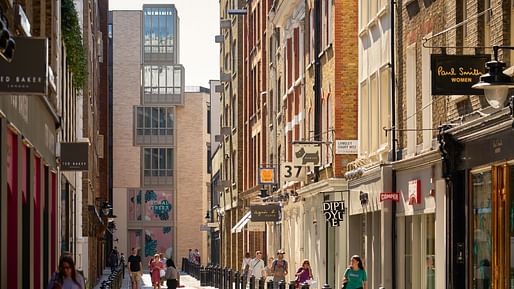
Floral Court, London, United Kingdom | Kohn Pedersen Fox Associates
Project excerpt: “This project creates a new district with a public courtyard at its heart in London’s storied Covent Garden. Where open-air cafes, market stalls, and street performers have long intertwined, Floral Court’s mixed-use scheme feels both contemporary and as if it has always existed. Its assemblage of individual projects that combine retail and residential uses both new and period buildings in the city’s historic core. The design team organized Floral Court around the guiding principles of improving London’s public realm, conservation, and the replacement of previously non-contributing architecture.”

Glenstone Museum, Potomac, Maryland | Thomas Phifer and Partners
Project excerpt: “This major expansion of the Glenstone Museum in Potomac, MD, dramatically increases exhibition space for its collection of post-World War II art from around the world. The centerpiece, a 204,000-square-foot building called the Pavilions, is ringed by a dramatically renovated landscape boasting 6,000 new trees and 55 native species, helps advance the museum’s mission of presenting contemporary art in a captivating setting. Overall, the project increased the museum’s exhibitions space by 50,000 square feet and more than doubled the area of restored woodlands, meadows, and streams. The landscape design was driven by a strategic master plan that increased the accessible land by more than 130 acres and provided a new public entrance, two free-standing cafes, and a center that highlights the sustainable practices deployed at the museum.”

Jishou Art Museum, Jishou, China | ATELIER FCJZ
Project excerpt: “Unlike other contemporary cultural institutions in China, the Jishou Art Museum in the regional capital of Xiangxi is centered in the community. By not treating this project like a separate, freestanding monument, the museum makes art more accessible to Jishou’s residents and makes encounters with art on their way to work and school much more likely. Firmly cemented in the city’s urban fabric, the new museum straddles the Wanrong River and functions much like a pedestrian bridge. Covered bridges called fengyu qiao, meaning wind and rain bridge, are common in this mountainous region of China, and the design is a contemporary interpretation of the time-honored building type.”

Minnesota State Capitol Restoration, St. Paul, Minnesota | HGA
Project excerpt: “Recognized as a Class Gilbert masterpiece built between 1898 and 1904, the building faced significant water infiltration, dangerous stone conditions, and long-delayed preservation efforts. The design team was originally hired in 2006 to conduct studies for a restoration, but the project failed to gain political traction and was suspended two years later. [...] Planning efforts resumed in 2012 with bipartisan support to fund the $310 million project followed shortly after. The sweeping restoration included exterior stone repair, a new accessible approach and entrance, comprehensive infrastructure replacement, and a new elevator and historic glass elevator restoration.”
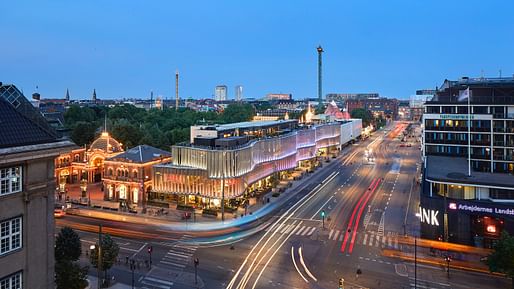
Tivoli Hjørnet, Copenhagen, Denmark | Pei Cobb Freed & Partners
Project excerpt: “With one foot planted in the past and one in the future, this project engages the history of Copenhagen’s extraordinary Tivoli Garden and adds to its storied legacy. The garden, originally founded in 1844 on the city’s perimeter, was envisioned as a place for amusement, culture, and recreation, and the Hjørnet project resonates with the garden’s dualities: traditional and experimental, bucolic and urban, contemplative and entertaining. [...] The new 92,000 sq.ft. building contains a hotel, restaurants, and retail space. Its key architectural element evokes the moat and fortifications that once ringed the city and remain imprinted on the garden’s layout. As those battlements once formed a boundary for the garden, this project now adds a defining edge that both engages and entertains. It operates as both a portal and curved mirror, offering entrance to the garden while amplifying the city’s vivid life.”
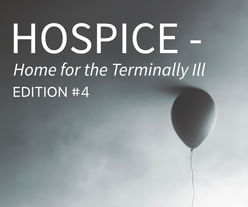
Hospice - Home for Terminally Ill #4
Register by Wed, Jan 15, 2025
Submit by Mon, Jun 16, 2025

The Home of Shadows / Edition #3
Register by Wed, Jan 29, 2025
Submit by Mon, Mar 3, 2025

Kinderspace: Architecture for Children's Development #2
Register by Thu, Jan 16, 2025
Submit by Mon, Jun 16, 2025

Re:Form – New Life for Old Spaces
Register by Wed, Jan 22, 2025
Submit by Tue, Sep 2, 2025
No Comments